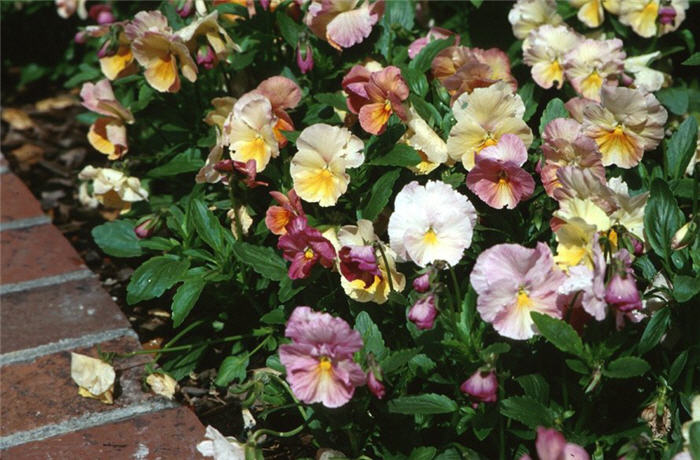| Botanical Name: Viola | |
| Common Name: Pansy |

-
Anatomy
-
Culture
-
Design
Plant Type
Annual
Height Range
Under 1'
Flower Color
Blue, Gold, Lavender, Pink, Purple, Yellow, Violet, White, Multi-Colored
Flower Season
Winter, Spring, Fall
Leaf Color
Green
Bark Color
n/a
Fruit Color
n/a
Fruit Season
n/a
Sun
Full, Half, Shade
Water
Medium, High
Growth Rate
Fast
Soil Type
Sandy, Clay, Loam
Soil Condition
Rich, Well-drained
Soil pH
Neutral
Adverse Factors
n/a
Design Styles
English Cottage, Formal, Mediterranean, Ranch
Accenting Features
Showy Flowers
Seasonal Interest
Winter, Spring, Fall
Location Uses
Perennial Border, Patio, Raised Planter
Special Uses
Cascade, Container, Cut Flowers
Attracts Wildlife
n/a
Information by: Stephanie Duer
Photographer: Steve Mullany
Photographer: Steve Mullany
-
Description
-
Notes
Okay, so you might not think of pansies as a low-water plant, but given that they are typically planted in the fall or early spring, they manage on very little supplemental watering, at least until summer. So, used in those seasons, they may be well suited to a water-wise garden. They come in too many colors and combinations to mention. They are all relatively low-growing, and bloom when its cool. A wonderful companion to flowering cabbage and kale. Just don't put them out in the sun in the hot summer months and expect them to thrive.
Plant in well drained, amended soil in sun to light shade (remember, we're talking fall and spring here). Water periodically, but let the soil dry just a bit between.